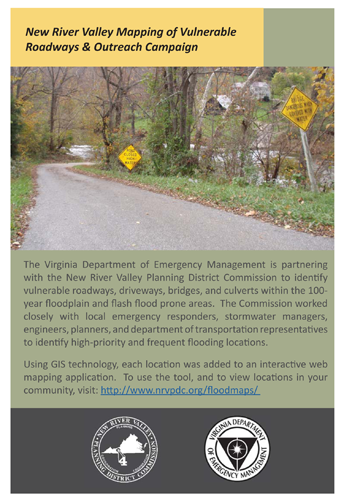Goal 1:
Identify vulnerable roadways, driveways, bridges, and culverts within the 100-year floodplain and flash flood prone areas. To get started, the Commission utilized GIS technology to identify each of the bridges and roadway segments that intersected with floodplain data. Second, the Commission met with local emergency responders, stormwater managers, engineers, planners, and department of transportation representatives to identify the high-priority/frequent flooding locations.
Once the high-priority locations were identified, the Commission performed field visits at each site. Inspectors took photos and documented existing conditions such as: the presence of water, visible signs of erosion, and existing signage or other permanent mitigation measures. The information was later entered into a geodatabase.
The geodatabase offers local stakeholders and Virginia Department of Emergency Staff the ability to review each location in detail, through the use of an interactive web mapping application. To use the tool, simply hover over any participating locality and click within the highlighted area. You can click on a location or photo and view the full report for each site.

